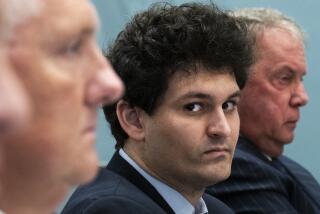Op-Ed: How to be an effective altruist when giving to charities
- Share via
This pandemic year, filled with fear and illness, has been a relentless assault on the human spirit. But the well of human kindness runs deep, especially in the holiday season when people open their hearts and wallets to charities in need.
But which charities deserve our support? The effective altruism movement, which began with moral philosophers, encourages people to consider evidence and careful analysis of charities to maximize the benefit of their giving.
The need for such analysis is underappreciated. People tend to greatly underestimate how much charities differ in their effectiveness, as research published this year shows. Whether it’s saving lives or improving health and well-being, the most effective charities are not, say, just two or three times more effective than other charities. They can be more than 100 times more effective.
For example, it costs up to $50,000 to train a guide dog to help a blind person in the developed world. By contrast, surgery to prevent blindness due to trachoma can cost less than $50 in the developing world. In the United States, $7 can buy a book for a schoolchild. In Kenya, $7 can remove parasitic worms from the digestive tracts of 10 children, enabling them to attend school, learn and earn a better living.
As these examples suggest, one can often do more good per dollar helping people outside the U.S. GiveWell, an organization founded by two former financial analysts, conducts rigorous research to determine which charities do the most good with every dollar spent. Using this information, ordinary people can save someone’s life and improve the futures of dozens more.
Yet, why don’t more people support these super-effective charities?
Partly, it’s ignorance. We know that better information makes some people give more effectively. And research has found that when people were asked to use a more impartial decision-making procedure, they tended to donate less parochially and more effectively. But ignorance and lack of reflection are just part of the story.
Other research shows that most people, when given information about charity effectiveness, simply ignore it, favoring personal preference over scientific evidence.
To understand why we don’t maximize effectiveness when giving, we must consider the psychology of altruism. What makes us give?
The human mind was not designed for impartial beneficence. Morality has evolved, both biologically and culturally, as a device for cooperation within groups. Groups of humans who help one another — sharing food when food is scarce, for example — are more likely to survive and outcompete other groups that leave their members to fend for themselves. Cultural evolution has taken our biological capacity for altruism and scaled it up with religion and peace-promoting modern institutions. But the psychological mechanisms behind our good deeds haven’t changed much.
Our social behavior is overwhelmingly driven by our emotions, and charitable giving is no exception. We empathize with a single child in need, but our empathy is largely insensitive to the differences between 1, 10 or 1,000 suffering children. And we empathize most with those who are closest to us, geographically and socially.
The most ardent effective altruists regard these tendencies as biases to be overcome. And perhaps, in some ultimate moral sense, they’re right. But that’s a tough pill to swallow. Adopting this approach in its most unyielding form leaves no room for personal attachments or indulgences.
If humans were governed by such strict principles, our societies might well be devoid of violence and poverty. But, alas, we’re not that species. We need a more flexible approach to modern moral life.
As an analogy, consider dieting. Most humans do better with a reasonably healthy diet that is psychologically and socially sustainable. This means including healthy foods that you like well enough and some foods that you love.
The same psychologically pragmatic approach can apply to charitable giving. It’s easier to follow effective altruism principles if we also acknowledge the importance of personal meaning when it comes to helping others.
The next time you’re ready to give, make two donations: one to a charity that speaks to your heart and one to a charity that’s expert-certified for extraordinary impact. Why not support your local school or hospital, but also give to a project that treats parasitic worm infections for about 66 cents per child? (GivingMultiplier.org, a website we created at Harvard, will add to your donations when you pair your giving in this way.)
Human goodness comes from the heart. We shouldn’t deny that. But by making charitable giving a bit more evidence-based, we can multiply our impact and benefit even more people. And isn’t that the goal?
Lucius Caviola is a postdoctoral researcher in psychology at Harvard. Joshua Greene is a professor of psychology at Harvard and the author of “Moral Tribes: Emotion, Reason, and the Gap Between Us and Them.”
More to Read
A cure for the common opinion
Get thought-provoking perspectives with our weekly newsletter.
You may occasionally receive promotional content from the Los Angeles Times.










